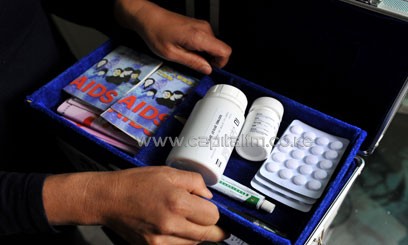Those surveyed were between 15 to 64 years.
The report further shows more women than men are infected with HIV at 6.9 percent for women and 4.4 percent for men.
It also indicates that there is higher prevalence of the killer disease in urban areas than rural areas at 6.5 percent and 5.1 percent respectively.
Speaking after the launch of the report, NASCOP Executive Director William Maina attributed the decrease to sustainable financial support by the government towards HIV&AIDS and communicable diseases programmes.
Maina also said that continued mortality among those not accessing treatment and improved survey methods have attributed to the decrease.
He also noted that the current free maternity programme was set to reduce the rate but urged more efforts to be put across by all stakeholders in order to reduce the rates further.
“We cannot say that because the prevalence has gone down nothing need to be done because the same people who are infected are still with us and require our services,” he stated.
The survey also shows that Nyanza remains the region with the highest prevalence of persons living with HIV/AIDS at 15.1 percent which is almost three times the national prevalence at 5.6 percent.
The report however shows HIV prevalence has fallen in most regions, with substantial decreases in prevalence at the Coast, Rift Valley and Nairobi regions but noted that there was no change observed in Nyanza and Central regions.
The report also shows the rate of HIV infection among men who were uncircumcised was five times higher than among men who were circumcised.
Prevalence among uncircumcised men stands at 17 percent against 3 percent for circumcised men.
Male circumcision has however increased in Nyanza region from 48 percent in 2007 to 66 percent in 2012.
The Chief Executive Officer Kenya Treatment Access Movement James Kamau however says the government has shown commitment to fight the disease.
“President Uhuru Kenyatta has been put as a champion for HIV/AIDS and that is good since we have political good will,” he pointed out.
He has recommended more awareness programmes to be carried out across the country on the HIV/AIDS.
Interestingly, the survey shows person who are educated is high in HIV prevalence.
“More need to be done because those educated and economically stable does not behave in a manner that indicates they perceive the risk of this disease,” Maina added.










































